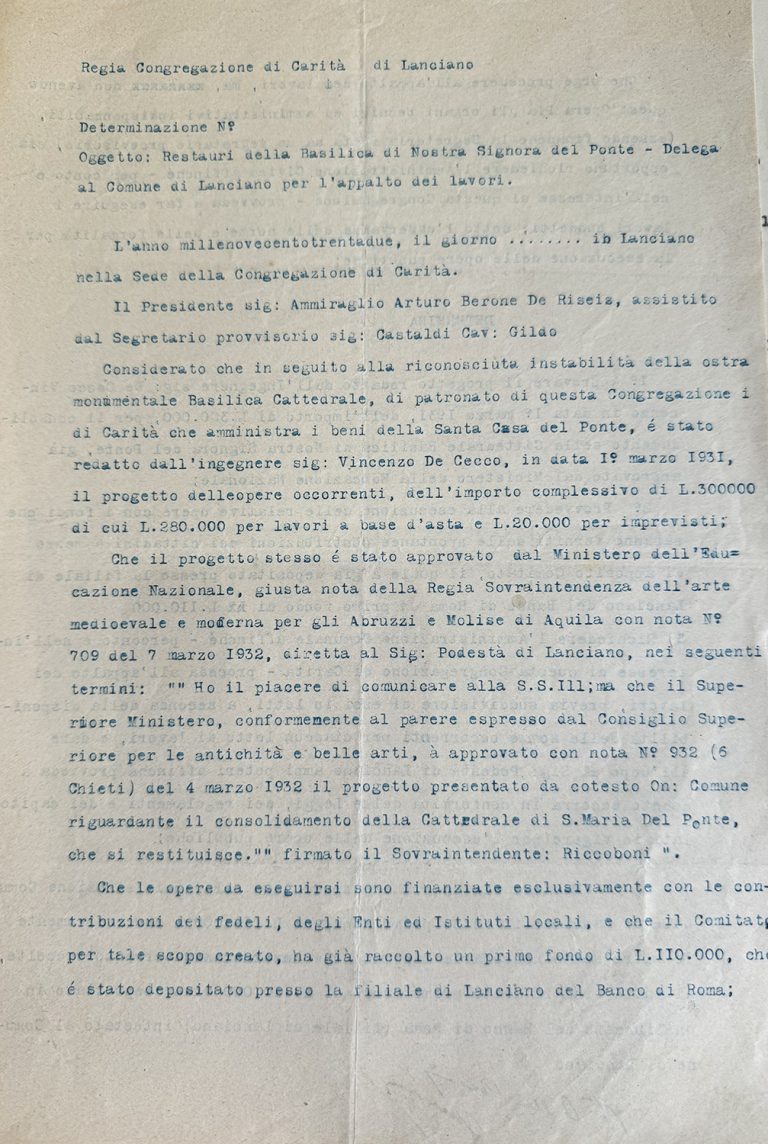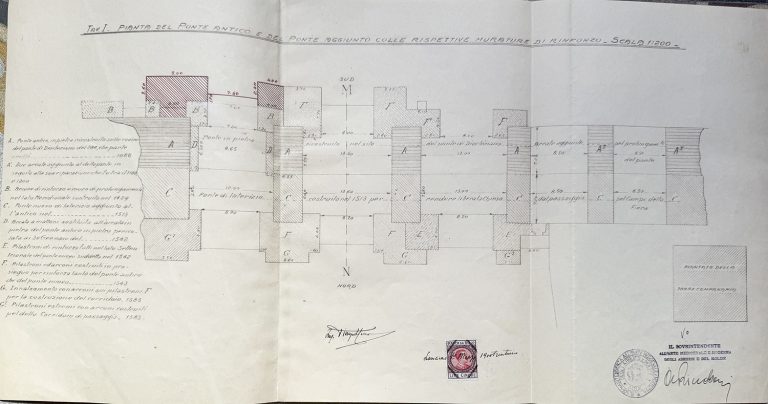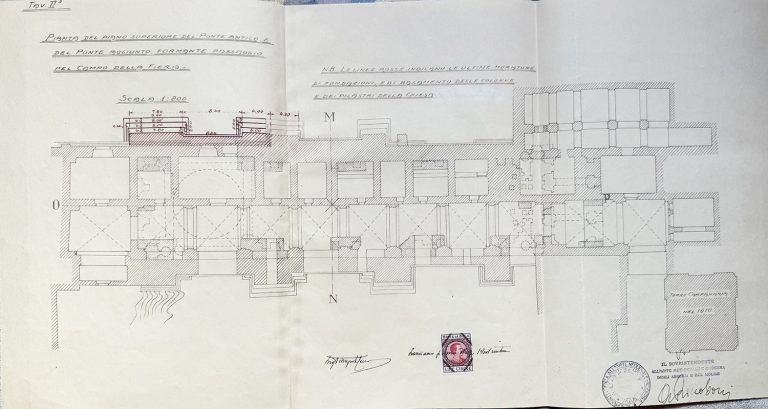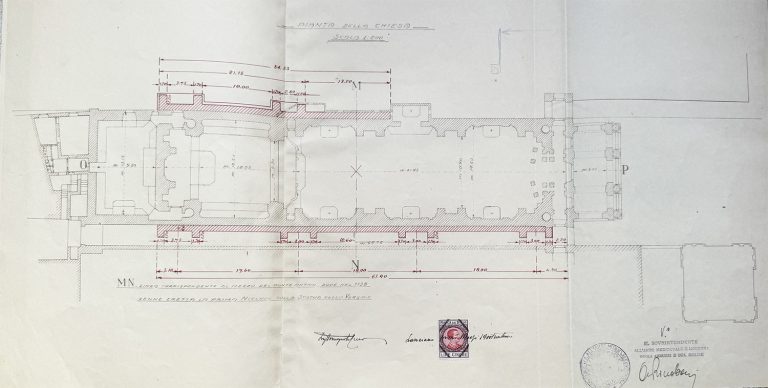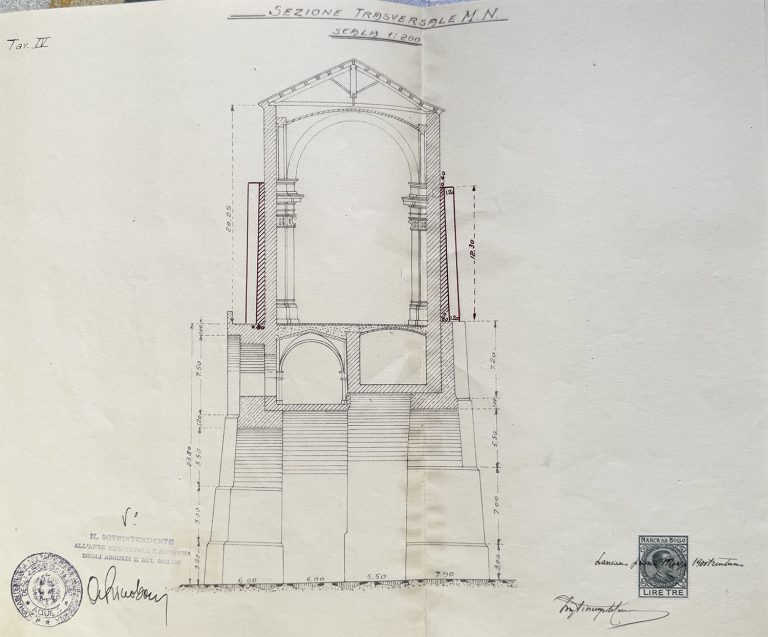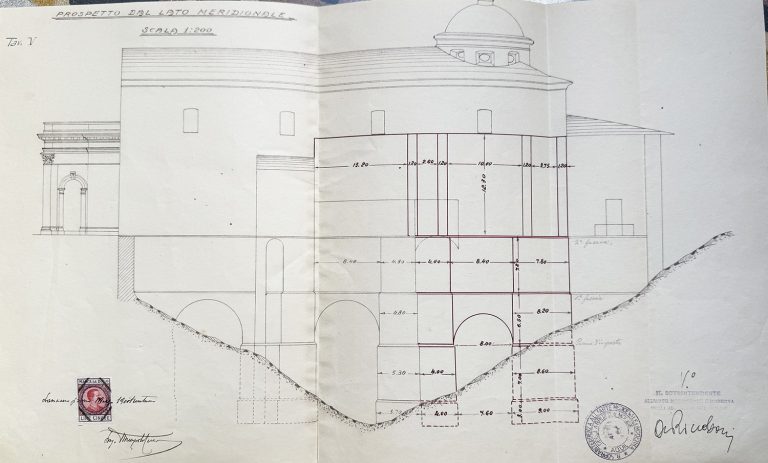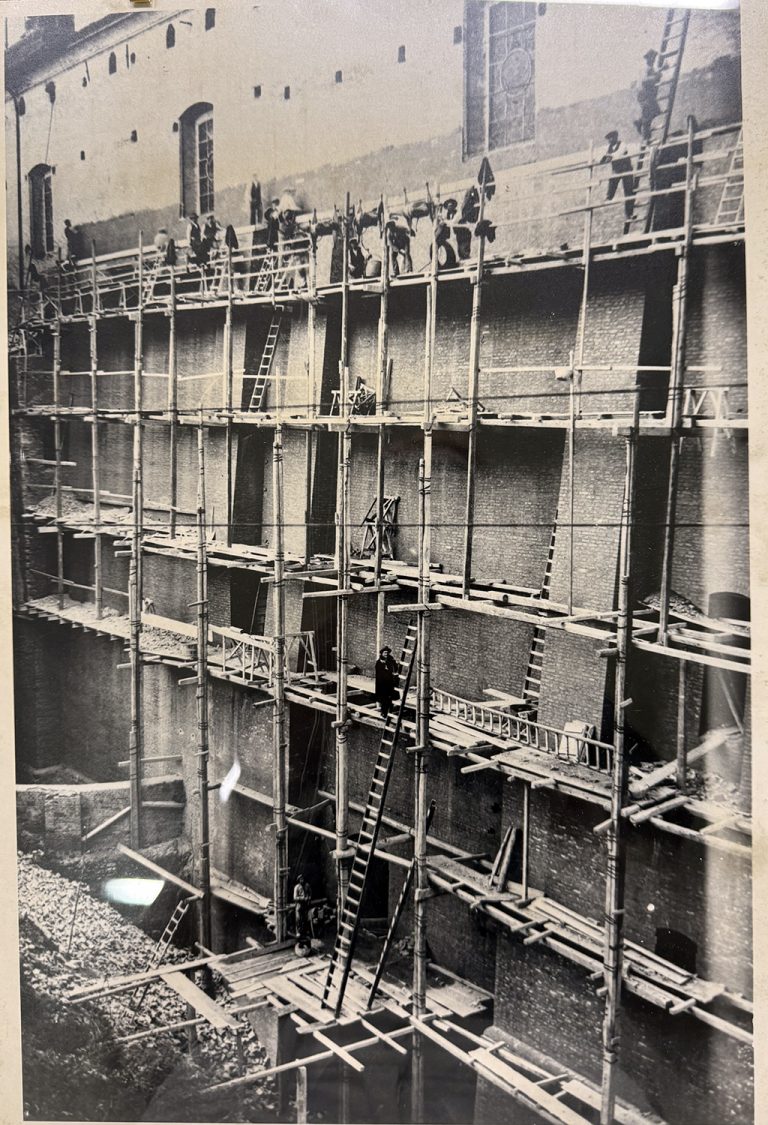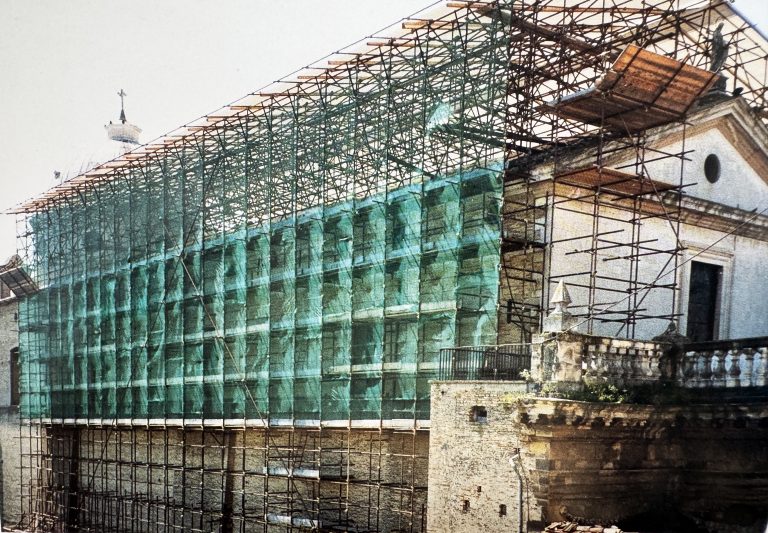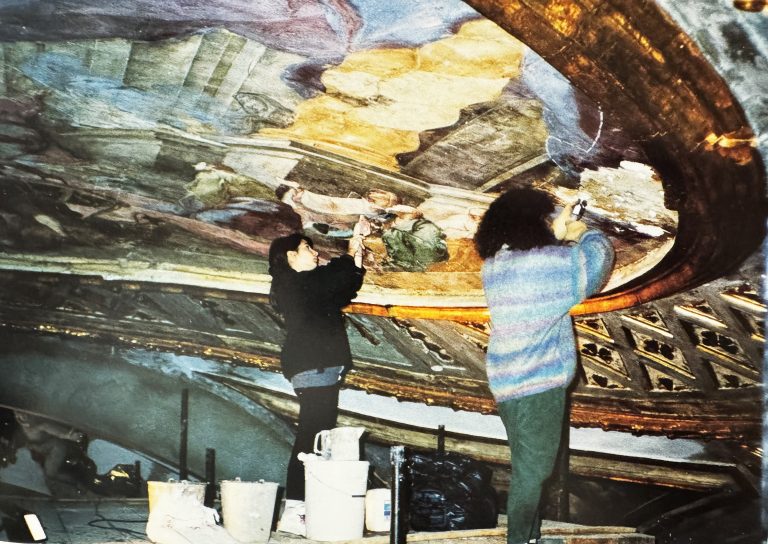The Cathedral of the Madonna del Ponte: history, art, devotion
The restorations in the Cathedral in the 20th century
The restorations in the Cathedral in the 20th century
MENU
The particular characteristic of the Cathedral of the Madonna del Ponte di Lanciano of having been built on the original Diocletian bridge and on its subsequent reconstructions at different times and in different ways with as many materials is also the basis of its long-standing structural problems, aggravated by the considerable height of the complex from the valley floor and the consequent and amplified oscillations produced by earthquakes and land settlements.
During the 20th century there were numerous collapses – localized to portions of the complex – and the consequent long periods of closure of the cathedral (1904, 1909, 1920, 1930, 1950) in order to subject it to delicate restoration and consolidation works. In particular in 1930 with the projects of Eng. Vincenzo de Cecco and in 1950 with those of the architect Ennio Villante important consolidation works, such as the installation of buttresses to contain the thrust of the vaults on the side walls, reinforced the building, limiting albeit in part the structural damage caused by the subsequent earthquake of 1984, with repercussions on arches and vaults that also involved the painted decorative apparatus.
The complex bureaucratic, planning and financing process of the Cathedral of the Madonna del Ponte di Lanciano for the post-earthquake damage was divided into various phases also established by the severity of the various situations: after cleaning and restoration work on frescoes, frames and gilded stucco preparatory to the propping up of the vaults, the consolidation and restoration intervention was aimed at the various portions of the religious complex.
After the most extensive consolidation works extended to the roof covering, the ceilings, the arches and the walls, the foundations under the floor and the architectural additions (capitals, frames and cornices), the artistic works (frescoes and canvases) were restored, the service works were redone, the adaptation to liturgical regulations was carried out, especially in the presbytery area and, lastly, the wooden furnishings were restored, finally returning the cathedral to worship and its religious functions on 30 August 1996.
This extensive and complex restoration phase is documented and punctually attested by the numerous projects accompanied by plans, elevations, cross-sections and perspective views of the Cathedral of the Madonna del Ponte.
Please , update your browser

